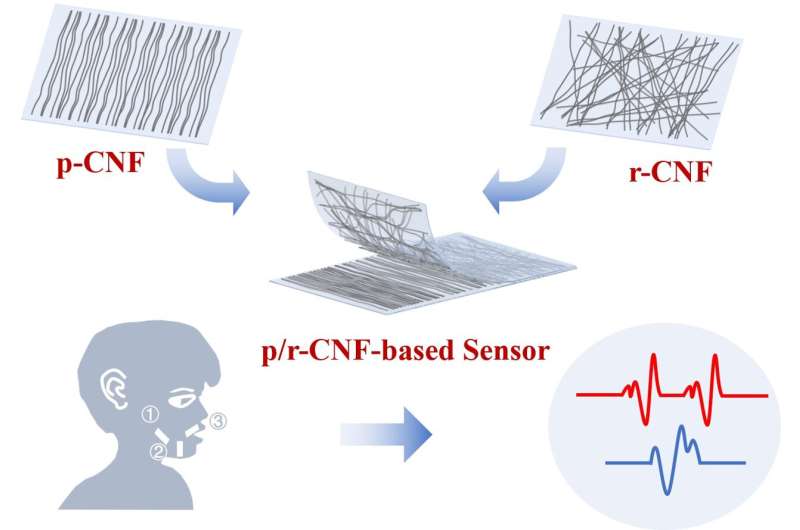Phys.org November 29, 2022
While high sensitivity and wide working range are desired key parameters for a strain sensor, they are usually contrary to each other to be achieved on the same sensor due to the tight structure dependence of both. Researchers in China used an integrated membrane containing both parallel aligned and randomly aligned carbon nanofibers (CNFs) to design a flexible strain sensor with high sensitivity and wide strain detection range. The parallel aligned CNF membrane (p-CNF) exhibited a low strain detection limit and high sensitivity, while the random aligned CNF membrane (r-CNF) exhibits a large strain detection range. The strain sensor with stacked p-CNF and r-CNF (p/r-CNF) exhibits both high sensitivity and wide working range. They demonstrated its ability of recognize facial expressions and joint movements. They also constructed an intelligent lip-language recognition system which could accurately track phonetic symbols. According to the researchers their sensor has applications in medical devices and developing other high-performance sensors…read more. TECHNICAL ARTICLE

The parallel aligned CNF membrane exhibits a low strain detection limit and high sensitivity… Credit: Nano Research, Tsinghua University